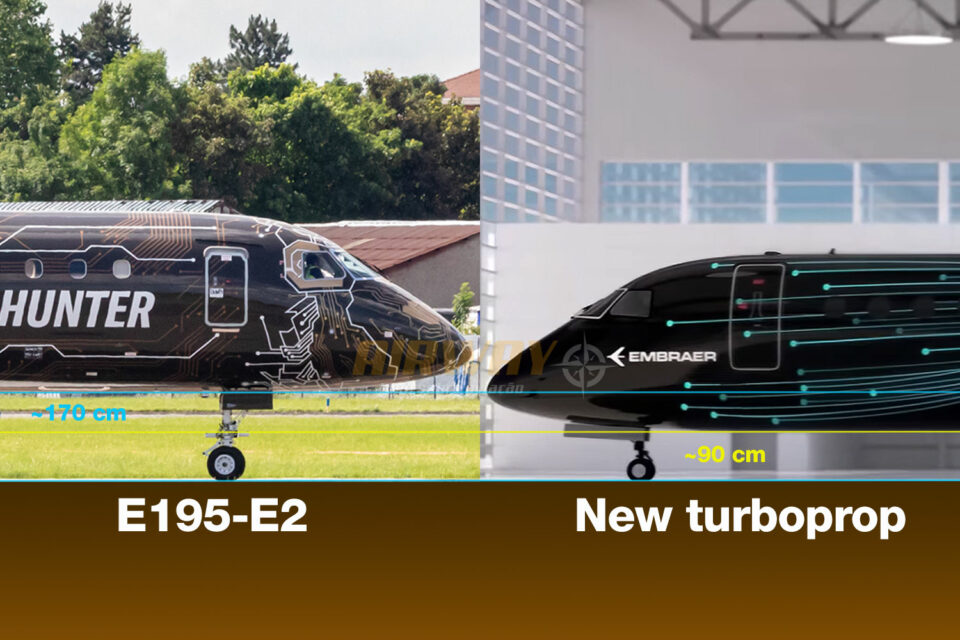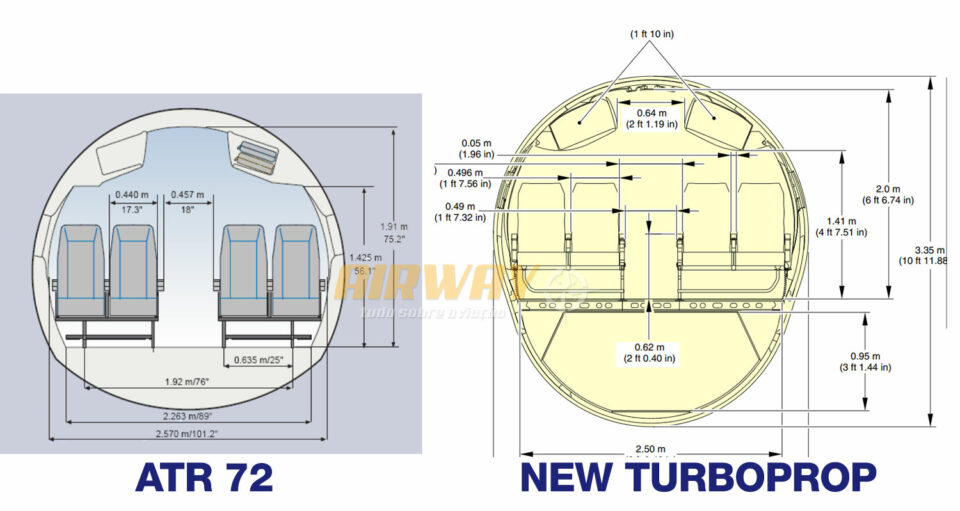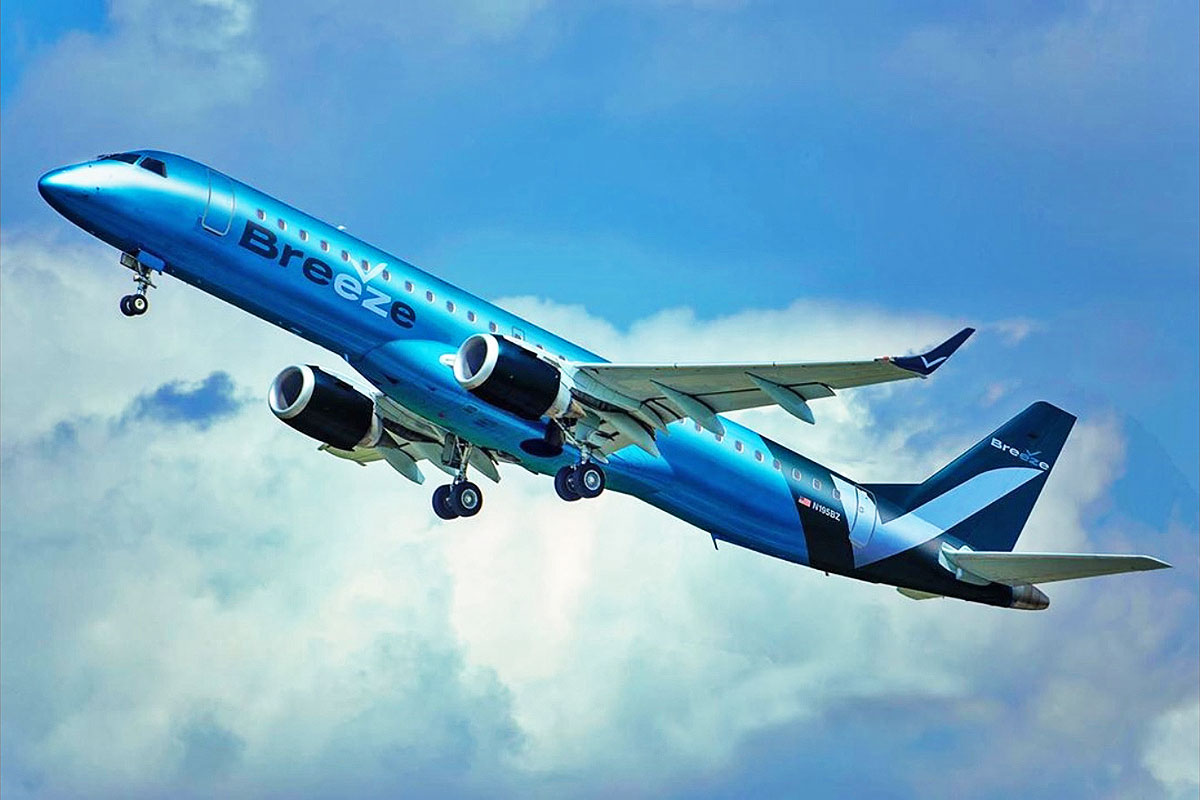Embraer posted a video on its social media on Friday showing more details of its new advanced passenger turboprop.
The aircraft should be officially launched in early 2023 and enter service from 2028. Although the computer images do not bring information, it is possible to verify something that the vice president of marketing at Embraer, Rodrigo Silva e Souza, commented in Farnborough last month.
The turboprop with 70 to 100 seats will have a shor height, with the fuselage closer to the ground. As the manufacturer intends to reuse the fuselage of the E-Jets in the project, to offer an internal space well superior to the ATR, it was possible to estimate the approximate height from the ground of the aircraft, in about 90 cm.
This measurement is much smaller than the E195-E2, for example, whose base of the cargo hold door is 1.74 m from the ground, according to Embraer data.
The low height of the landing gear made the turboprop resemble the MD-80, a passenger jet from McDonnell Douglas.

But why will the future next-generation turboprop be so low? The explanation was given by Rodrigo Silva e Souza himself: to facilitate access to cargo holds and also to the general work of handling at regional airports, which do not have a large infrastructure.
The lower height was made possible by the change in the aircraft’s layout. Previously, Embraer planned to install the engines in the wings, but changed the configuration, placing the two turboprops in the tail.
In addition to reducing cabin noise, this design allowed the small swept wings to be clean, just accommodating the main landing gear.

In addition, Embraer’s new passenger plane will offer the convenience of a lower cargo hold, something that the rival ATR does not have – as in other older turboprop models, luggage and small packages of cargo are transported in sections of the main cabin in the front or back.
It seems that the solution proposed by Embraer is already being well accepted by potential customers. The company revealed at the British event that it had more than 250 letters of intent for the unprecedented model.







